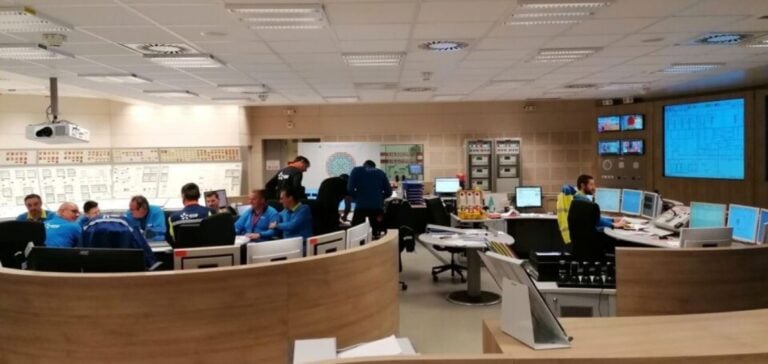The Flamanville EPR reactor in the Manche region of France has restarted after an automatic shutdown last Wednesday.
This incident, linked to human error during post-divergence tests, triggered an automatic shutdown order for the reactor.
EDF points out that the event was not due to a hardware problem, but to a misconfiguration of the electronic control systems.
This situation, while regrettable, is commonplace during the commissioning phase of nuclear reactors, when precise procedures are essential.
The French nuclear safety authority (ASN) confirms that the shutdown was the result of a failure to comply with operating procedures.
According to Karine Herviou of the Institut de Radioprotection et de Sûreté Nucléaire (IRSN), this type of incident shows that the safety devices are working as intended, stopping the reactor when an anomaly is detected.
The reactor is currently stabilized at 0.2% power, and teams are continuing the tests required to prepare it for connection to the power grid, expected by late autumn.
Technical advances and obstacles
The Flamanville EPR project, launched over fifteen years ago, is experiencing numerous delays and budget overruns.
Initially estimated at 3.3 billion euros, the cost has now been re-evaluated at 13.2 billion euros.
Twelve years behind schedule, the project faces recurring technical challenges.
Each ramp-up stage is accompanied by a series of checks and tests to ensure the reactor’s safety and efficiency.
EDF recognizes that technical contingencies, including automatic shutdowns, may still occur before full capacity is reached.
Reactors of this scale, especially those commissioned for the first time after several decades, often face unforeseen challenges requiring real-time technical adjustments.
The ramp-up procedure, segmented into stages, enables these challenges to be managed gradually and in a controlled manner.
France’s nuclear revival strategy
The restart of the Flamanville EPR is part of a wider context of increased nuclear power generation in France.
In 2022, President Emmanuel Macron announced the construction of six new EPR2-type reactors, an optimized version of the EPR, with the possibility of eight additional reactors in the future.
The aim of this strategy is to secure the country’s energy supply, while meeting the need to renew the existing nuclear fleet.
France’s nuclear fleet, with 56 reactors in operation, requires major investment to maintain its production capacity and anticipate the closure of older reactors.
The Flamanville EPR, with its planned capacity of 1,600 MW, represents a major strategic addition in this context.
Its capacity to generate electricity for around two million households makes it a key component of this revival.
Prospects for grid integration
The Flamanville reactor moves closer to grid connection.
The first divergence, carried out last Tuesday, marks the start of a step-by-step power ramp-up process.
For the moment, the aim is to reach 25% power, the threshold required to couple the reactor to the grid by late autumn.
However, previous experience suggests that adjustments and delays are still possible.
The Flamanville EPR is the fourth reactor of its type built anywhere in the world, and the most powerful in France.
Its start-up, despite its obstacles, remains a central element of the French energy landscape, and its success or failure will influence future nuclear projects.
The coming months will be crucial in assessing the viability of this type of reactor and the adjustments needed for future projects.






















